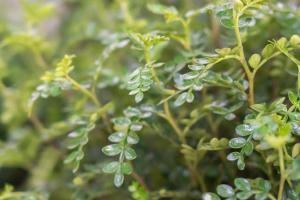Do Pot Plants Turn Colors in Fall?
As the autumn season approaches, it is a common sight to see trees and bushes changing colors before shedding their leaves. The question often arises whether potted plants also change colors in the fall. The answer to the question is a bit more complex than a simple yes or no.
Factors Affecting the Colour Change in Potted Plants
The color change in potted plants is mainly determined by several factors, including the plant's species, the weather conditions in the area, and the care given to the plant. Some plants, such as mums, are well-known for their vibrant fall colors that they develop in the fall season. Other plants, including succulents, do not change colors significantly in autumn.
The amount of sunlight that a plant receives is crucial in the development of color also. Lack of sunlight can result in dull and faded colors, while full exposure to sunlight can promote the development of a bright and vibrant color. Proper nutrition is another essential factor that affects the coloring of plants. A lack of nutrients, particularly nitrogen, may result in poor color development.
Fall Color Development in Potted Plants
While it is true that not all potted plants change colors in the fall, some do. If you want to witness the incredible autumn colors in potted plants, you should invest in varieties that are known to produce beautiful hues in fall. Aside from mums, other popular fall plants to grow in pots include autumn crocus, asters, ornamental cabbages, and kale.
Moreover, while some plants' leaves may not change color, their flowers may do so. For instance, certain varieties of roses can produce warmer hues of orange, yellow, or red in autumn, making them perfect for fall garden decoration.
Caring for Potted Plants in Fall
Caring for potted plants in fall is crucial to ensure that they thrive and develop their full autumn colors. During the fall season, the weather can be unpredictable, so it is vital to keep an eye on your plants' water needs. Plants in pots require more watering than those grown directly in the garden. The soil in pots tends to dry out much faster, resulting in the plants' water stress. Therefore, it is essential to ensure that the soil in the pot stays adequately moist.
To prevent the plant from wilting, it is essential to avoid overwatering it. Overwatering can result in root rot, which can cause the plant to die. If the pot has a drainage hole, place a saucer underneath it to catch the excess water.
Conclusion
While not all potted plants develop incredible fall colors, many do so. To witness these amazing colors, it is essential to care for your potted plants correctly. Giving the plant proper care, including proper nutrition, sunlight, and watering, will help to create the ideal environment for the plant to thrive and produce its full fall colors.
Investing in varieties that are known for their vibrant fall colors, such as mums, asters, or ornamental cabbages, is another excellent way to ensure that your potted plants develop their full autumn colors. Remember, fall is a time to celebrate the beauty of nature, and what better way to do so than by growing amazingly colorful potted plants in your home garden?

 how many times do yo...
how many times do yo... how many planted tre...
how many planted tre... how many pine trees ...
how many pine trees ... how many pecan trees...
how many pecan trees... how many plants comp...
how many plants comp... how many plants can ...
how many plants can ... how many plants and ...
how many plants and ... how many pepper plan...
how many pepper plan...
































